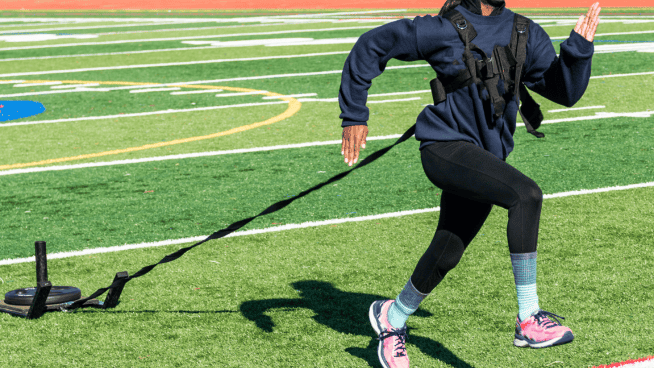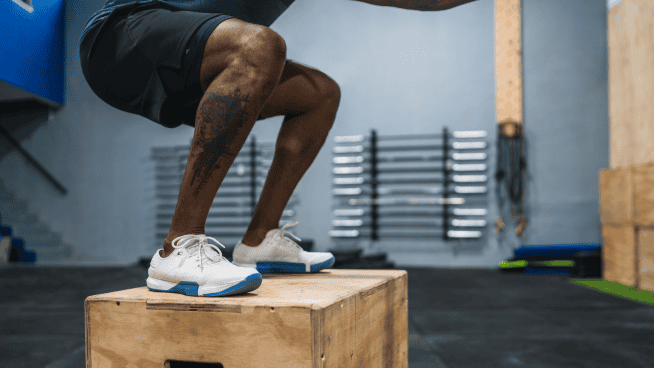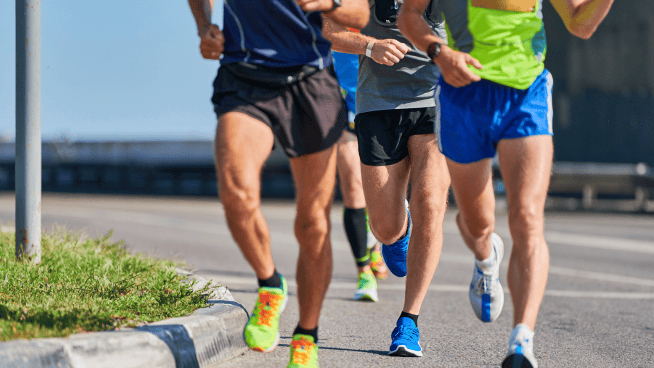The Importance Of Cross Training For Youth And High School Athletes
As sport’s seasons quickly become year-round, it can be easy to forget to make time for other activities. Especially ones that make us work in new ways. Spending an entire year on a single sport can be tough on young athletes. It can lead to burnout, injuries, or degraded performance. Taking time to pause your main sport and divert your time and energy to another has too many benefits to ignore. But before we go there, let’s break it down.
Cross-training helps athletes develop different skill sets, muscles, and movement patterns, which leads to a more well-rounded and versatile athlete. Cross-training also reduces the chance of injury and burnout.
What is ‘cross-training,’ and why is it so vital to the overall performance of young athletes?
1. What is cross-training?
Cross-training is when athletes participate in sports other than their main focus. For example, soccer players may cross-train by participating in cross country or track. Another way athletes can achieve this is by incorporating a diverse set of exercises into their workouts. By doing this, they will work different muscles than they typically do, and they will be forcing their brain to think out of the box. While cross-training is important, it does take time and dedication so why should athletes make it a priority?
2. Why does it matter?
By encouraging athletes to participate in activities that change their normal routine, we prevent injuries and burnout while improving overall fitness. By working muscles across the entire body, we are able to prepare ourselves to work out more and fight off minor injuries. This also goes for our brains. By switching exercises, we are also reworking our brains. When we let our brains focus on other intense activities, we are less likely to get bored and feel a need to move on. Overall, cross-training keeps athletes, especially young ones, engaged longer. It is easy to see why cross-training is so important to improving overall fitness with these benefits. How we incorporate these tasks into our routine can be tricky, but it is important to remember that it is okay to find a method that works for you personally.
3. How to make it work for you.
The benefits of cross-training are clear, but it can be a struggle to find the time or to find an off-season to pick up another sport as a busy athlete. It is important that when athletes begin cross-training that they are not overworking themselves. The best way to go about this is dedicating a few days a week to cross-training workouts. By slowly integrating these practices, you will prevent injury and overworking yourself. If you have an off-season or can afford to make one, it can be beneficial to pick up a new sport. Finding a new sport that sparks a passion is the best way to cross-train.
In conclusion, cross-training will give athletes a refreshing physical and mental challenge. Whether you are a parent, coach, or athlete, ensuring these techniques are included is vital. Getting out there and giving it a try is the first step to becoming the best you can be. We would love to see how you get your cross-training in. Share your videos on Instagram and tag us for a chance of being featured on our page.
How To Cross Train
Cross-training can take many forms. The key to successful cross-training programs is to use the same energy systems used in the sport while allowing a break from sport-specific activities. Training the same major muscle groups differently keeps the athlete conditioned and helps prevent overuse injuries.
- A cyclist may use swimming to build upper body strength and to maintain cardiovascular endurance. They may use cross-country skiing to maintain leg strength and endurance when snow and ice prevent biking time.
- Swimmers may use free weight training to develop and maintain strength levels. They may incorporate rock climbing to keep upper body strength and endurance up.
- Runners may use mountain biking to target the leg muscles from different angles. They can use deep water running to lessen the impact while maintaining a conditioning schedule.
- A shot putter may use Olympic weightlifting exercises to build overall explosiveness. They may use plyometrics and sprinting to develop the needed explosiveness in the hips and legs.
RECOMMENDED FOR YOU
MOST POPULAR
The Importance Of Cross Training For Youth And High School Athletes
As sport’s seasons quickly become year-round, it can be easy to forget to make time for other activities. Especially ones that make us work in new ways. Spending an entire year on a single sport can be tough on young athletes. It can lead to burnout, injuries, or degraded performance. Taking time to pause your main sport and divert your time and energy to another has too many benefits to ignore. But before we go there, let’s break it down.
Cross-training helps athletes develop different skill sets, muscles, and movement patterns, which leads to a more well-rounded and versatile athlete. Cross-training also reduces the chance of injury and burnout.
What is ‘cross-training,’ and why is it so vital to the overall performance of young athletes?
1. What is cross-training?
Cross-training is when athletes participate in sports other than their main focus. For example, soccer players may cross-train by participating in cross country or track. Another way athletes can achieve this is by incorporating a diverse set of exercises into their workouts. By doing this, they will work different muscles than they typically do, and they will be forcing their brain to think out of the box. While cross-training is important, it does take time and dedication so why should athletes make it a priority?
2. Why does it matter?
By encouraging athletes to participate in activities that change their normal routine, we prevent injuries and burnout while improving overall fitness. By working muscles across the entire body, we are able to prepare ourselves to work out more and fight off minor injuries. This also goes for our brains. By switching exercises, we are also reworking our brains. When we let our brains focus on other intense activities, we are less likely to get bored and feel a need to move on. Overall, cross-training keeps athletes, especially young ones, engaged longer. It is easy to see why cross-training is so important to improving overall fitness with these benefits. How we incorporate these tasks into our routine can be tricky, but it is important to remember that it is okay to find a method that works for you personally.
3. How to make it work for you.
The benefits of cross-training are clear, but it can be a struggle to find the time or to find an off-season to pick up another sport as a busy athlete. It is important that when athletes begin cross-training that they are not overworking themselves. The best way to go about this is dedicating a few days a week to cross-training workouts. By slowly integrating these practices, you will prevent injury and overworking yourself. If you have an off-season or can afford to make one, it can be beneficial to pick up a new sport. Finding a new sport that sparks a passion is the best way to cross-train.
In conclusion, cross-training will give athletes a refreshing physical and mental challenge. Whether you are a parent, coach, or athlete, ensuring these techniques are included is vital. Getting out there and giving it a try is the first step to becoming the best you can be. We would love to see how you get your cross-training in. Share your videos on Instagram and tag us for a chance of being featured on our page.
How To Cross Train
Cross-training can take many forms. The key to successful cross-training programs is to use the same energy systems used in the sport while allowing a break from sport-specific activities. Training the same major muscle groups differently keeps the athlete conditioned and helps prevent overuse injuries.
- A cyclist may use swimming to build upper body strength and to maintain cardiovascular endurance. They may use cross-country skiing to maintain leg strength and endurance when snow and ice prevent biking time.
- Swimmers may use free weight training to develop and maintain strength levels. They may incorporate rock climbing to keep upper body strength and endurance up.
- Runners may use mountain biking to target the leg muscles from different angles. They can use deep water running to lessen the impact while maintaining a conditioning schedule.
- A shot putter may use Olympic weightlifting exercises to build overall explosiveness. They may use plyometrics and sprinting to develop the needed explosiveness in the hips and legs.










